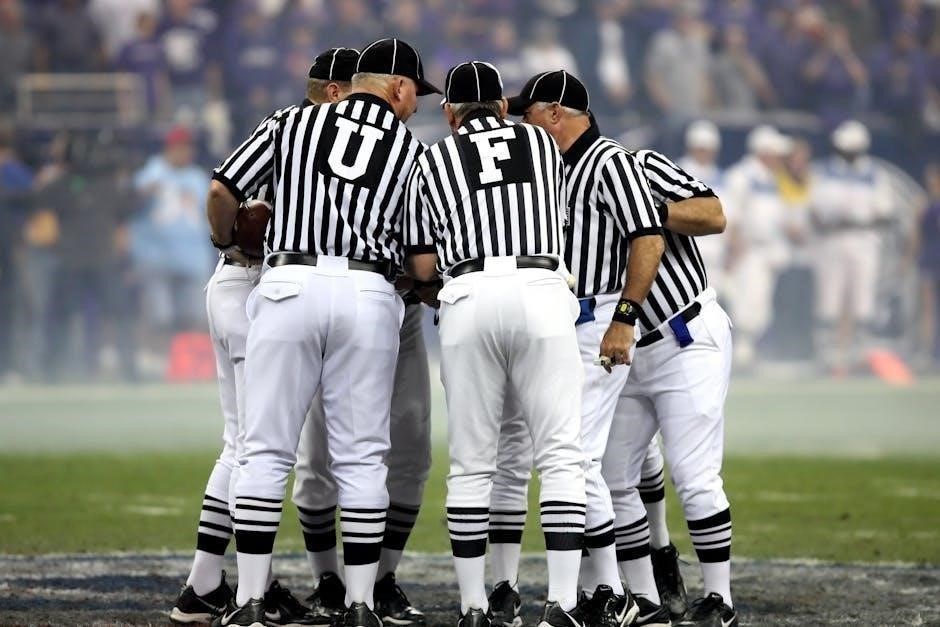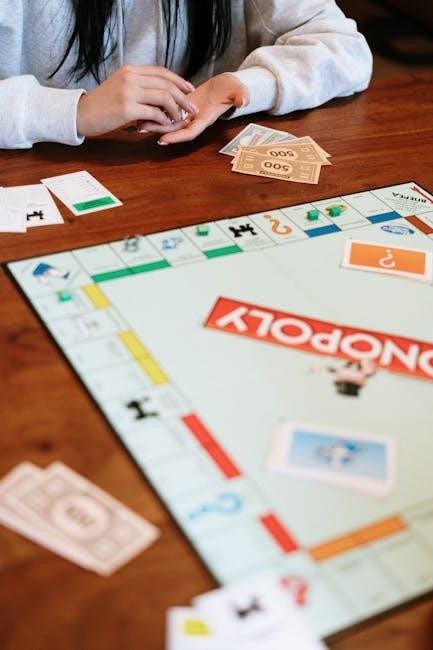
Cornhole is a popular outdoor game with standardized rules governed by the American Cornhole Association (ACA). Understanding these rules ensures fair and enjoyable gameplay for all participants.
Overview of Cornhole as a Game
Cornhole is a fun, accessible outdoor game where players throw beanbags (or “cornhole bags”) at a raised board with a hole. Governed by the American Cornhole Association, it combines skill and strategy. The objective is to score points by landing bags on the board or through the hole. Played in casual and competitive settings, Cornhole is enjoyed by people of all ages due to its simplicity and social nature. Its popularity has grown significantly, making it a staple at gatherings and events worldwide.
Importance of Understanding the Rules
Understanding Cornhole rules is essential for ensuring fair play and maximizing enjoyment. The American Cornhole Association (ACA) provides official guidelines to standardize gameplay, preventing disputes and maintaining consistency. Knowing the rules, such as scoring systems, foul definitions, and equipment specifications, helps players of all skill levels compete equitably. Whether playing recreationally or competitively, adherence to these rules fosters a positive and respectful gaming environment, making Cornhole accessible and enjoyable for everyone involved.
Official Cornhole Rules from the American Cornhole Association (ACA)
The ACA establishes standardized rules for Cornhole, ensuring consistent gameplay. These rules cover equipment, setup, scoring, and player conduct, promoting fairness and clarity in all matches.
General Setup and Equipment Requirements
The game requires two cornhole boards, each measuring 24″ x 48″ with a center hole 9″ from the top and 12″ from the sides. Boards are placed 27′ apart. Players use eight corn-filled bags, four of each color, weighing 14-16 ounces. The front edge of the board is 3-4″ from the ground. A clean, dry surface is essential for play. Equipment must meet ACA standards to ensure fair and consistent gameplay across all matches.
Player Positions and Lane Assignments
Players compete in teams of two or four, with each team assigned to a designated lane. The lane is divided into left and right sides, and players must stay in their lane throughout the game. The winner of a coin toss determines which team or player throws first. Proper positioning ensures fair play and adherence to ACA rules. Teams alternate turns, maintaining their assigned lanes to avoid confusion and maintain gameplay order. This structured setup promotes organization and fairness in every match.
Turn Order and Bag Throwing Mechanics
Turn order begins with a coin toss, where the winning team chooses who throws first. Players alternate turns, each throwing one bag at a time. The throwing distance is 27 feet for adults and 20 feet for juniors and seniors. A player must stand behind the front edge of the board and release the bag from a closed hand. Non-compliance results in a foul. These mechanics ensure fair and consistent gameplay, aligning with ACA standards.

Scoring Systems in Cornhole
Points are awarded for bags in the hole or on the board, with cancellation scoring used. The first player or team to reach 21 points wins the game.
Point Allocation for In-the-Hole and On-the-Board
Bags in the hole score 3 points, while those on the board score 1 point. Cancellation scoring means only the difference in points is awarded per round. For example, if Team A scores 3 points and Team B scores 2, Team A gets 1 point. This system ensures competitive balance and strategic gameplay. Proper bag placement and hole measurements are crucial for accurate scoring. Understanding these rules is essential for fair and enjoyable play, as outlined in the ACA guidelines;
Cancellation Scoring and Winning Conditions
Cancellation scoring means only the points difference between teams is awarded per round. For instance, if Team A scores 4 points and Team B scores 2, Team A gets 2 points. A game is won by reaching 21 points first, with a minimum lead of 2 points. If the score is tied at 21, play continues until one team leads by 2. These rules ensure competitive balance and clear winning conditions, as outlined in the ACA guidelines for fair and structured gameplay.

Gameplay Mechanics and Regulations
Cornhole involves tossing bags onto a board, adhering to ACA standards. Proper throwing techniques and equipment setup ensure fair and enjoyable gameplay for all participants involved.
Throwing Techniques and Distance Requirements
Players must maintain a consistent throwing distance of 27 feet for adults and 15 feet for juniors. Proper foot placement within the designated lane is essential. Bags must be thrown with an underhand motion, and any crossing of the front edge of the board during release results in a foul. The ACA specifies that both feet must stay behind the board’s edge until the bag lands. Adhering to these rules ensures a fair and enjoyable game for all participants.
Practice and Warm-Up Rules

Practice sessions are typically allowed before the game begins to ensure players are prepared. Warm-ups should be brief and focused on throwing techniques. Players may practice individually or in teams, but this is generally agreed upon by all participants. Once the game starts, no practice throws are permitted. The ACA rules emphasize that practice should not delay the game, ensuring smooth progression. Adhering to these guidelines helps maintain a fair and organized gameplay environment for everyone involved.
Special Rules and Exceptions
Fouls, penalties, and disqualifications are addressed under specific conditions. Players must avoid crossing the foul line or interfering with bags. Severe violations may lead to penalties or disqualification, ensuring fair gameplay and adherence to rules.

Fouls, Penalties, and Disqualifications

A foul occurs when a player crosses the foul line or interferes with a bag during play. Penalties may include cancellation of the throw or loss of points. Severe or repeated violations can lead to disqualification from the game. Proper adherence to these rules ensures fair play and sportsmanship among all participants. Understanding and avoiding fouls is essential for maintaining the integrity of the game and providing an enjoyable experience for everyone involved.
Handling Disputes and Rule Violations
Disputes during gameplay should be resolved promptly by referring to the official ACA rules. If a violation is suspected, players must address it before the next throw. A tournament official or designated judge makes final decisions. Open communication and respect are key to resolving conflicts fairly. Ensuring all players understand the rules beforehand minimizes disagreements and maintains a smooth, enjoyable game flow for everyone involved in the match or competition.
Common Variations of Cornhole Rules

Variations include recreational and competitive play styles, with custom rules often added for casual games, ensuring flexibility and fun for diverse player preferences and settings.
Recreational vs. Competitive Play Differences

Recreational cornhole is often played with simplified rules, focusing on fun and casual enjoyment, while competitive play adheres to strict ACA guidelines. In casual games, players may adjust scoring, distances, or bag weights for easier play. Competitive matches, however, require precise board measurements, official bag specifications, and adherence to fouls and penalties. Recreational settings often allow practice throws and relaxed rules, whereas competitive games enforce strict turn orders and lane assignments. This distinction ensures both formats cater to different player preferences and skill levels, making cornhole accessible to everyone.
Custom Rules for Casual Games

Casual cornhole games often feature custom rules to enhance fun and inclusivity. Players may opt for relaxed scoring, such as counting all bags on the board, or adjust the throwing distance for younger participants. Some groups allow practice throws before the game begins or introduce creative scoring systems, like “around the world” challenges. Additionally, casual games might include fun penalties, like taking a step back for missed throws, or team-based variations to encourage collaboration. These modifications make the game more accessible and enjoyable for all skill levels while maintaining its core appeal.
Understanding cornhole rules enhances gameplay and ensures fun for all players. Learn the basics, explore variations, and enjoy this engaging outdoor activity with friends and family.
The game is played with two boards placed 27 feet apart. Players take turns throwing cornhole bags, aiming for the hole or landing on the board. Bags in the hole score 3 points, while those on the board score 1 point. Opposing players’ scores cancel each other out, with the winner being the first to reach 21 points. Fouls, like crossing the foul line or touching the bag after release, result in penalties. Adhering to these rules ensures a fair and enjoyable game for all participants.
Encouragement to Play and Learn More
Cornhole is a fun and accessible game for all ages, perfect for backyard gatherings or competitive tournaments. Learning the rules opens the door to endless enjoyment and social interaction. Whether you’re a casual player or aiming to compete, mastering the basics enhances your experience. Explore the official ACA guidelines for a deeper understanding and to refine your skills. Grab some bags, set up the boards, and join the growing community of Cornhole enthusiasts. The game awaits—let the fun begin!